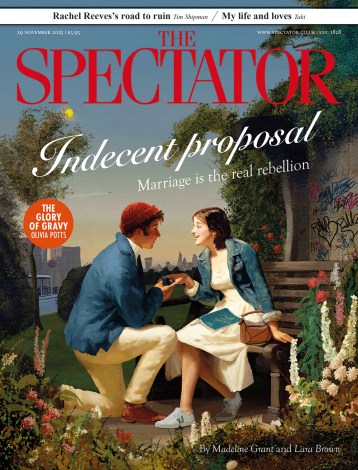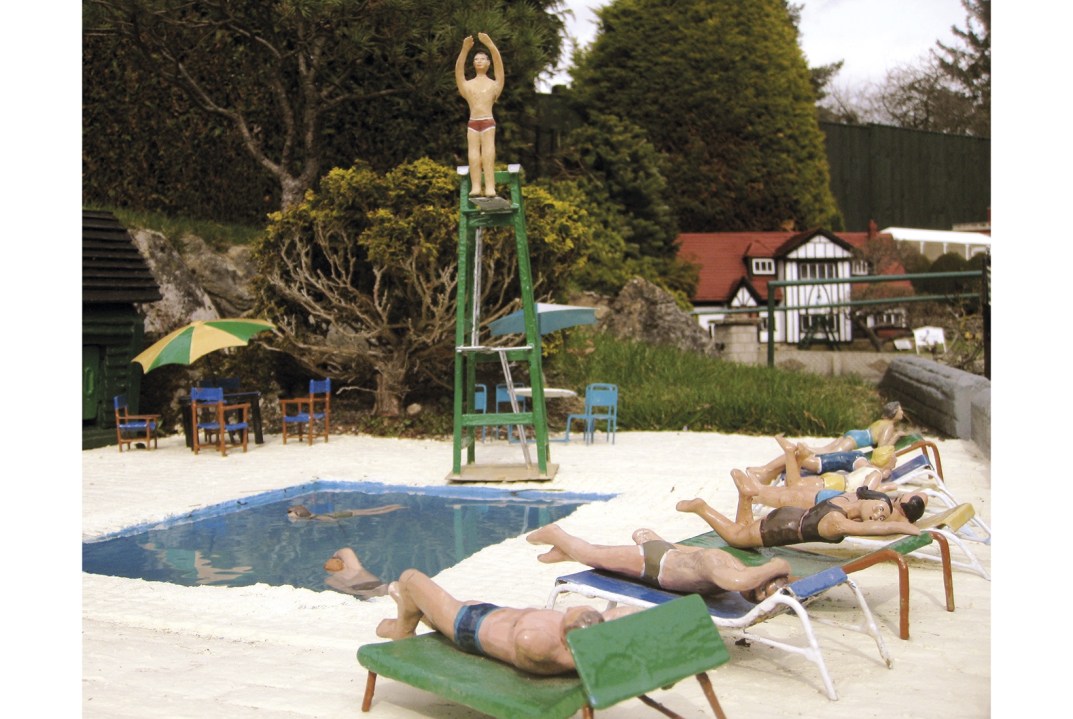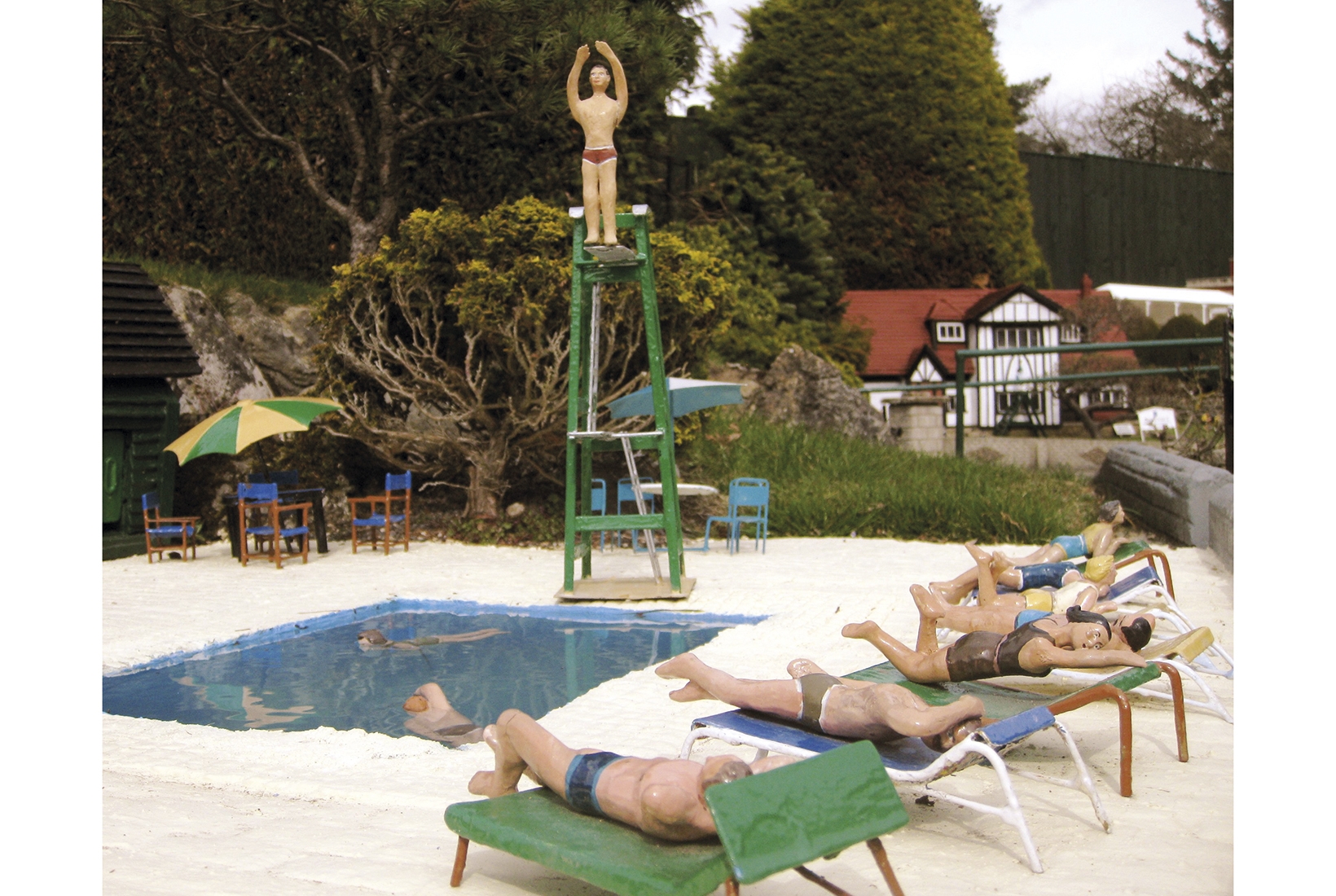When you leave Bekonscot, the world looks different. The semis and grass verges of suburban Beaconsfield seem slightly wrong: too large, too assertive. It takes a minute or two to adjust your perspective — to size yourself up, or bring the surrounding houses down. In that moment, you experience the sensation described by Will Self in Scale, his morphine-addled hymn to Britain’s most celebrated model village: ‘Some people lose their sense of proportion; I’ve lost my sense of scale.’
Well, supply your own lockdown metaphor. As we emerge, muzzy-headed, from extended voyages around our own living rooms, the government’s recent announcement that we are now free to visit ‘amusement arcades, outdoor skating rinks, social clubs and model villages’ sounded like a bizarre bureaucratic afterthought. In fact, Bekonscot’s one-way system of paths was in place long before any notion of social distancing. The whole scaled-down landscape of towns, industries, harbours and hills was designed to be enjoyed from outdoors.
One week after reopening, it was certainly being enjoyed. A small boy almost combusted on the spot as one of Bekonscot’s endlessly circuiting model trains hurtled out of the shrubbery: ‘There’s another!’ Adults were reading aloud the punning names on miniature shopfronts: ‘Sam ’n’ Ella’s Meats’; ‘Argue & Twist: Solicitors’. It’s like rinsing your perception in eyewash. The world suddenly looks bright, surprising and slightly off-centre: no small achievement for what’s still generally seen as a kiddie attraction. Self quotes Claude Lévi-Strauss: ‘Alterations in scale sacrifice the sensible in favour of the intelligible.’
The makers of model villages exhibit a kind of resistance to an unsatisfactory reality
The broadcaster and historian Tim Dunn used to work at Bekonscot; he’s since written a history of Britain’s 30 or so surviving model villages. ‘I used to think people only came to Bekonscot with their kids,’ he says. ‘That’s absolutely not true — you’ll often see groups of adults. There are a couple of factors in play. In Europe, “miniature parks” are less twee; adults can admire them for their accuracy. But British model villages are often witty. You’ll see things that you recognise from everyday life, but caricatured.’
And Bekonscot, after all, was the whim of an adult: Roland Callingham, a City accountant who settled in Beaconsfield in the 1920s and commissioned W.J. Bassett-Lowke to build a model railway around his new swimming pool. This was not kids’ stuff. Bassett-Lowke once created a solid silver train set for the Maharaja of Gwalior, and commissioned houses from Rennie Mackintosh and the German modernist Peter Behrens. (One of Bassett-Lowke’s original locomotives still rattles around Bekonscot today, having run more miles in service than many full-size trains.) The public was admitted in 1929: Callingham’s pool became a seaport, though he continued to swim lengths among the miniature piers and liners.
Bekonscot was in the vanguard: for a period in the mid-20th century model villages sprang up everywhere. Some, unquestionably, aspire to the condition of outsider art. For the collector Charles Wade, the model village that he built at Snowshill Manor in Gloucestershire was a natural expression of his arts and crafts ideals. Predating Bekonscot, it’s now being restored by National Trust conservators with the same care that they’d lavish on Knole or Petworth. In Bourton-on-the-Water, model houses were built with Cotswold limestone. ‘It’s a very much more serious village,’ says Dunn. ‘There are no puns, no model people doing silly things. This is where art comes into it — as with a landscape architect or a great garden designer; it’s a way of creating a vision.’
That vision has seeped into the wider culture, and not always in the ways that you might expect. In Mary Norton’s The Borrowers Aloft (1961) the tiny protagonists inhabit a model village inspired by the early days of Bekonscot. It’s only cosy until you read it — Norton’s Borrowers exist in a state of continual peril and dread. The London landmarks of Tucktonia in Dorset were explosively trashed in the 1985 alien-invasion movie Lifeforce (Tucktonia was razed soon afterwards — the fate of many postwar model villages), and Self’s paranoid hero fantasises about releasing his pet lizard to stalk miniature streets (similar horrors occur daily along Bekonscot’s waterways, as huge koi carp lunge at model beachgoers like something out of H.P. Lovecraft). Dunn identifies in the makers of model villages a certain strain of, well, not darkness, exactly, but definitely a kind of resistance to an unsatisfactory reality.
‘I always say that model villages are created out of frustration. It’s about not being able to do something in full scale. They do it in small scale because that’s what they can afford.’ That might mean retreating to the interwar utopia of Bekonscot (though anyone who assumes that this betrays an unsavoury nostalgia for a pre-Windrush Britain hasn’t looked closely enough at the village’s remarkably diverse four-inch high population). Or it might mean New Bedford, the exquisitely detailed urban hellscape created by Jimmy Cauty of the KLF. ‘I asked Jimmy “Why have you done this?”’ says Dunn. ‘Why have you built this disgusting, dystopian town that makes everyone feel like the end of the world is nigh? He said, “I’ve always been a bit of an anarchist. I’d like this to happen in full scale; I just can’t really afford it.”’
Bekonscot isn’t immune to progress. For years, it moved with the times — there were office blocks and a mini-Concorde. Then, in the 1990s, it was rebooted back to a semi-rural 1930s. ‘They actually put pitched roofs on some houses,’ comments Dunn. Now time is ticking forward again. At Dunn’s instigation, they’ve added a New Town: an architectural capriccio on Metroland modernism, featuring skewed but recognisable interpretations of the Hoover Building and Arnos Grove Tube station. A pair of chic socialites stand outside a replica of High and Over, the Corbusier-style mansion in Amersham — for all the world like Evelyn Waugh’s Margot Beste-Chetwynde and Professor Silenus.
It’s that quality of playfulness — of taking reality, subtracting size, and being pleasantly startled by the difference — that makes model villages so revealing. You might feel, like Self, that they represent Prince Charles’s fantasy England, ‘a silver-wedding, commemorative-plate, biscuit-tin place’. Or you might find in them a modest step towards W.H. Auden’s Eden; a world where we have a ‘few saddle-tank locomotives, overshot waterwheels and other beautiful pieces of obsolete machinery to play with’. Either way, they deliver a cheerful jolt to unexamined notions about our own place — and size — in the world. ‘Perhaps it’s a God complex,’ says Dunn. ‘When you’re alone at Bekonscot last thing in November, when the lights have gone down but the buildings are illuminated and you can see the trains trundling around, you do feel almost as if you’re the Almighty.’ The scale is small, but the vistas are limitless.
Bekonscot Model Village is open every day from 10 a.m. to 5.30 p.m. but you currently need to book in advance to be admitted.







Comments